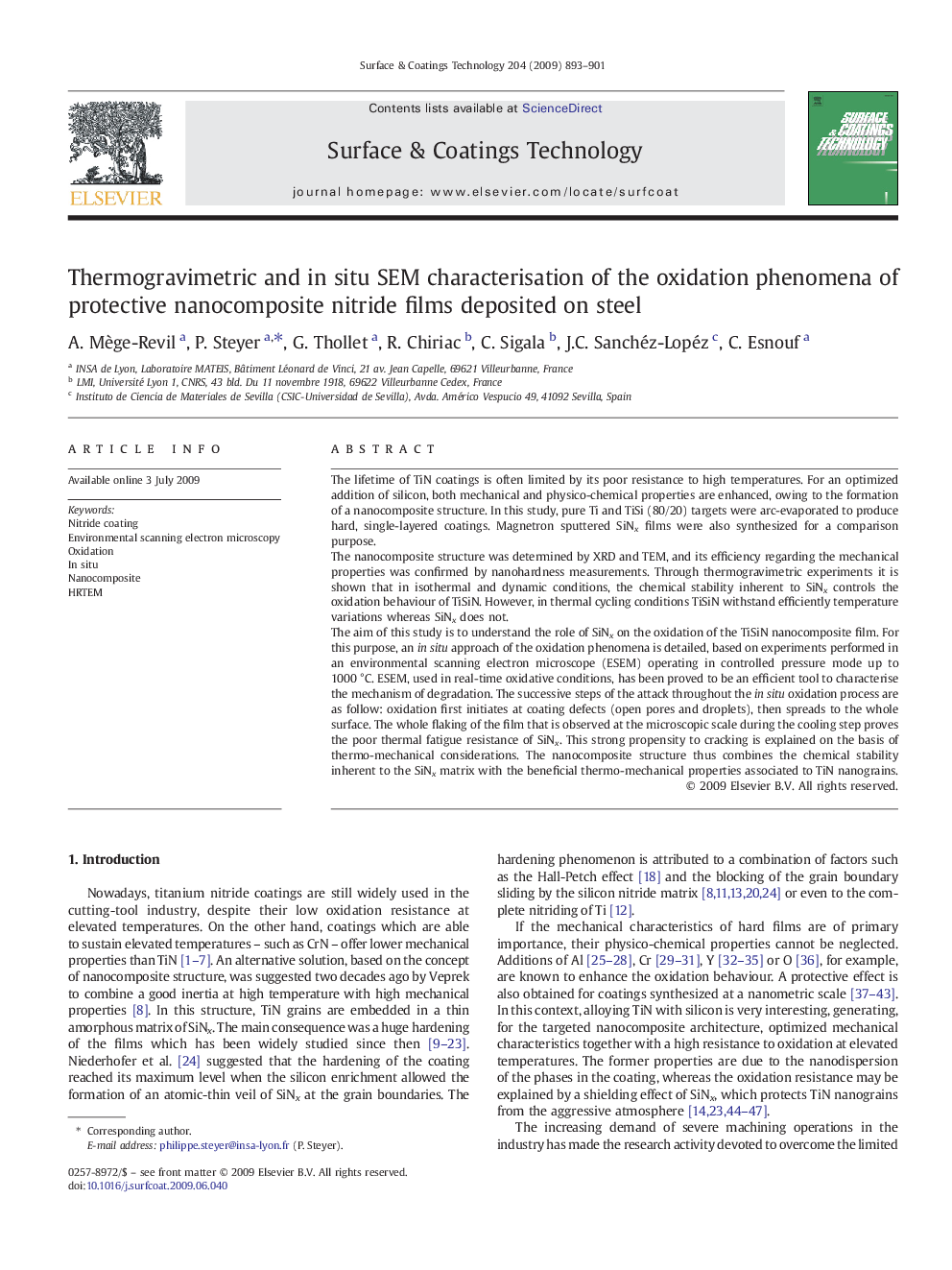| Article ID | Journal | Published Year | Pages | File Type |
|---|---|---|---|---|
| 1660341 | Surface and Coatings Technology | 2009 | 9 Pages |
Abstract
The aim of this study is to understand the role of SiNx on the oxidation of the TiSiN nanocomposite film. For this purpose, an in situ approach of the oxidation phenomena is detailed, based on experiments performed in an environmental scanning electron microscope (ESEM) operating in controlled pressure mode up to 1000 °C. ESEM, used in real-time oxidative conditions, has been proved to be an efficient tool to characterise the mechanism of degradation. The successive steps of the attack throughout the in situ oxidation process are as follow: oxidation first initiates at coating defects (open pores and droplets), then spreads to the whole surface. The whole flaking of the film that is observed at the microscopic scale during the cooling step proves the poor thermal fatigue resistance of SiNx. This strong propensity to cracking is explained on the basis of thermo-mechanical considerations. The nanocomposite structure thus combines the chemical stability inherent to the SiNx matrix with the beneficial thermo-mechanical properties associated to TiN nanograins.
Related Topics
Physical Sciences and Engineering
Materials Science
Nanotechnology
Authors
A. Mège-Revil, P. Steyer, G. Thollet, R. Chiriac, C. Sigala, J.C. Sanchéz-Lopéz, C. Esnouf,
